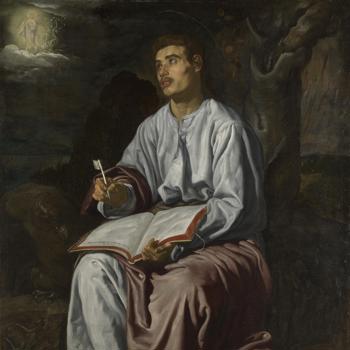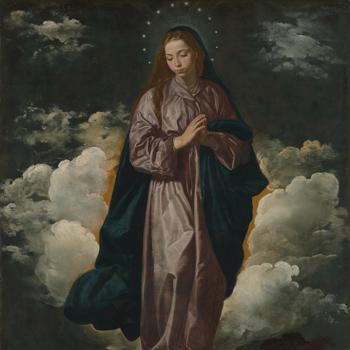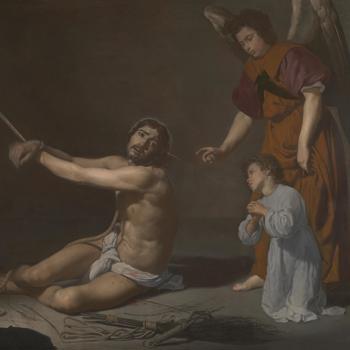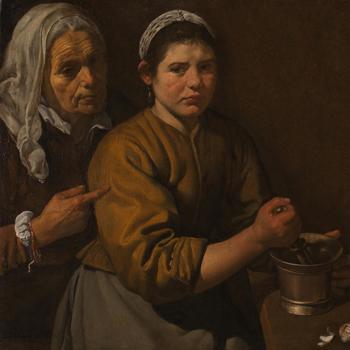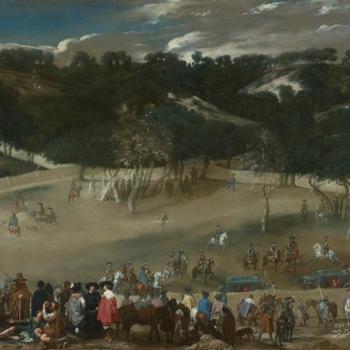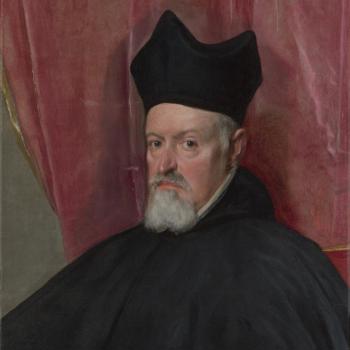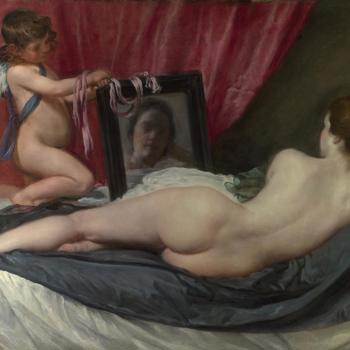Diego Velázquez, The Immaculate Conception
Two Paintings for the Shod Carmelites, Seville
Velázquez painted these two works as companion pieces during his early career in Seville, in around 1618. They were perhaps intended to promote the recent celebrations in the city of a papal decree defending the mystery of the Immaculate Conception, the belief that the Virgin Mary was conceived without sin.
We don't know who commissioned The Immaculate Conception and Saint John the Evangelist on the Island of Patmos, but they are first recorded in 1800 in the chapter house of the Convent of the Shod Carmelite Order in Seville.
Saint John and the Virgin both appear in the foreground, surrounded by objects identifying who they are, strongly illuminated from the top left. The colours of the Virgin’s clothes are echoed in reverse in Saint John’s, and both paintings demonstrate Velázquez’s skill in conveying a strong contrast between light and shade.
Velázquez painted these two works as companion pieces during his early career in Seville, in around 1618. They were perhaps intended to promote the recent celebrations in the city of a papal decree defending the mystery of the Immaculate Conception, the belief that the Virgin Mary was conceived without sin. This teaching was popular in seventeenth-century Spain, and particularly in Seville, where artists such as Velázquez and his teacher Francisco Pacheco played an important role in promoting the idea visually to the city’s churchgoers.
We don‘t know who commissioned The Immaculate Conception and Saint John the Evangelist on the Island of Patmos, in which John has a vision of the Woman of the Apocalypse (the source of much of the imagery associated with the Immaculate Conception). They are first recorded in 1800 in the chapter house of the Convent of the Shod Carmelite Order in Seville. The Carmelites were particularly devoted to the doctrine of the Immaculate Conception. These works were certainly commissioned and conceived together, but may have originally formed part of a larger complex, perhaps incorporating polychromed (’many coloured‘) sculpture.
The paintings are not only linked by theme, but by composition and colour. Saint John and the Virgin both appear in the foreground, surrounded by objects identifying who they are, strongly illuminated from the top left. The colours of the Virgin’s clothes are echoed in reverse in Saint John’s, and both paintings demonstrate Velázquez’s skill in conveying a strong contrast between light and shade.
Both figures look like they’re based on real models; one interpretation of these pictures is that Velázquez painted himself as Saint John and Juana Pacheco, whom he married in 1618, as the Virgin. Saint John’s angular face is in contrast to the Virgin’s more delicate features.
He gazes upwards towards heaven and his vision, while the Virgin casts her eyes downwards. She is the most important figure in both paintings, as she links the heavenly and earthly realms.

